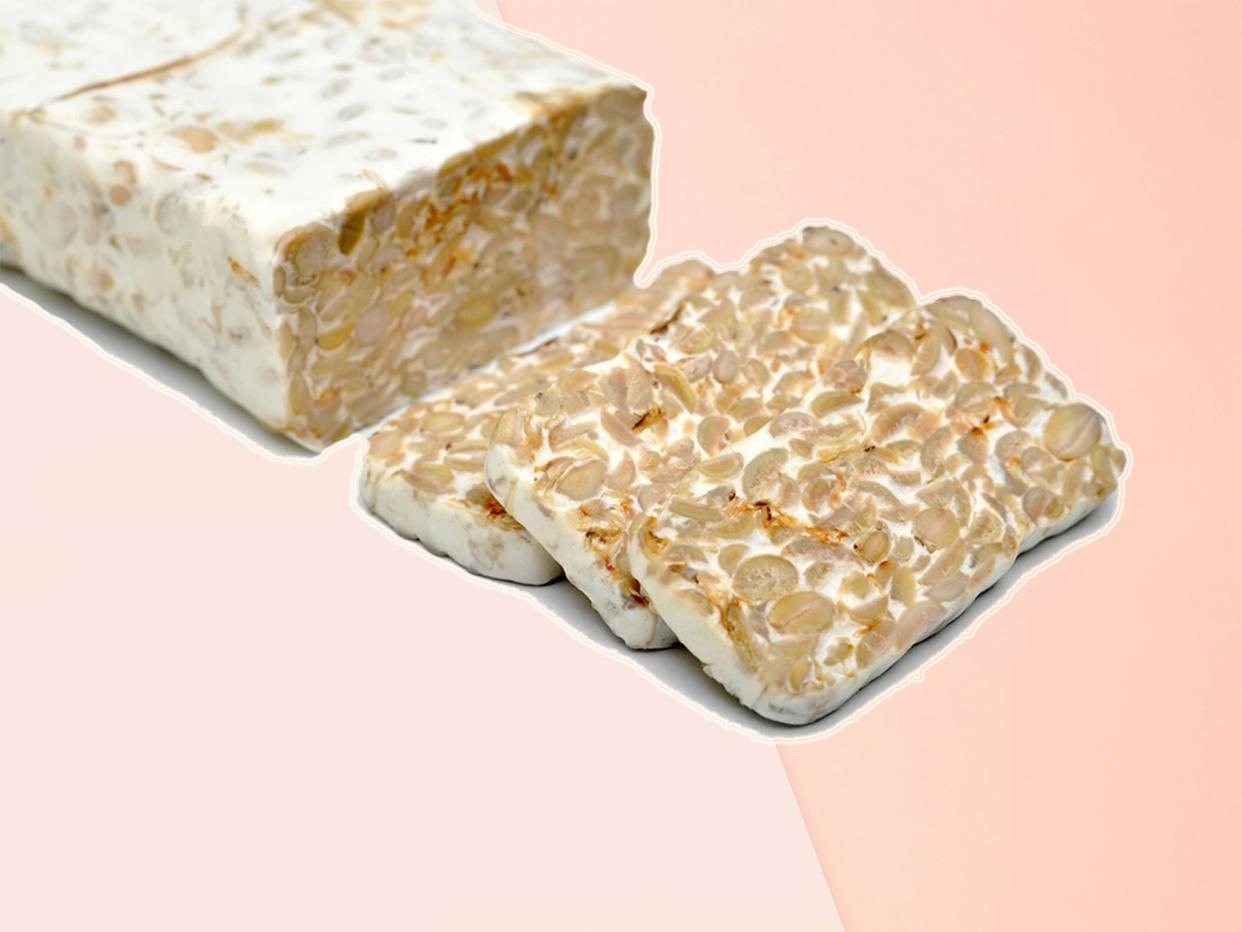What is Tempeh—and How Do You Use It?

Tempeh is a powerhouse food, but it often gets overshadowed by its more popular cousin, tofu. However, tempeh is not just for vegans or health food store shoppers anymore—tempeh is popping up on restaurant menus and in grocery stores everywhere. But how much do you actually know about this plant-based protein?
Here’s everything you need to know about tempeh, so you can start adding this meat alternative to your Meatless Monday routine. You’ll also find plenty of tempeh recipes that even meat eaters will love!
What Is Tempeh Made of?
Tempeh is made from soybeans, although various beans, whole grains, and flavorings are often added as well. (We love Trader Joe’s Organic 3-Grain Tempeh!) To make tempeh, soybeans are cooked and fermented then packed into a brick-like cake.
Lightlife is the most widely available tempeh brand in grocery stores—and the only ingredients used in their Original Tempeh are organic soybeans, water, and organic brown rice. If you have a soy allergy, there are some soy-free tempeh options out there made strictly from legumes, whole grains, or even hemp protein.
Related: Is Soy Good for You?
Tempeh Nutrition

Below you will find the nutritional information for a three-ounce serving of Lightlife Original Tempeh:
Calories: 140
Total Fat: 4.5g
Saturated Fat: 1g
Polyunsaturated Fat: 2g
Monounsaturated Fat: 1g
Cholesterol: 0mg
Sodium: 10mg
Potassium: 8% DV
Total Carbohydrates: 10g
Dietary Fiber: 7g
Sugars: 0g
Protein: 16g
Calcium: 6% DV
Iron: 10% DV
Because tempeh is packed into a cake, it offers more bang for your buck than some other meat alternatives when it comes to protein. Tempeh is also very high in fiber, offering more than a quarter of our daily fiber needs in one serving.
As if the protein, fiber, and probiotic boosts weren’t enough, tempeh is also a great source of many different vitamins and minerals. Tempeh is also an excellent source of magnesium, B vitamins, phosphorus, and manganese—key nutrients that promote a healthy sleep cycle.
What Does Tempeh Taste Like?

Tempeh is pretty divisive—you either love it or hate it, and some people actually prefer it to tofu. Tempeh has a distinct tang and nutty flavor (think of it as the sourdough of plant proteins) and it absorbs the flavor of ingredients around it. Tempeh is chewy and has more of a bite to it than tofu, making it a popular vegan bacon alternative.
Tempeh vs. Tofu

While tempeh and tofu are both soy-based products, they do have some fundamental differences. Let’s start with comparing their nutritional value.
Below, you will find the nutritional information for a three-ounce serving of Nasoya Extra Firm Tofu:
Calories: 80
Total Fat: 4g
Saturated Fat: 0.5g
Polyunsaturated Fat: 2.5g
Monounsaturated Fat: 1g
Cholesterol: 0mg
Sodium: 25mg
Potassium: 8% DV
Total Carbohydrates: 3g
Dietary Fiber: 1g
Sugars: 0g
Protein: 9g
Calcium: 6% DV
Iron: 8% DV
Tempeh is higher in calories, protein and fiber—also offering impressive gut health benefits. While tofu is higher in sodium, it still only accounts for about one percent of your daily sodium limit. If you’re focused on calories or are making a dish that already contains protein, like a chickpea curry, tofu may be your best bet. But if you’re looking for a protein-packed meal after a workout or are really trying to boost your gut health, tempeh is your best bet.
When it comes down to it, you really can’t go wrong with either tempeh or tofu. Tofu is thought to be more processed than tempeh, but it still is plenty healthy as it is not loaded with salt, sugar, saturated fat, or chemical additives. The nutritional information for tofu can vary slightly depending on if whether it’s silken, firm, extra firm, or super firm, but all options are healthy nonetheless. Both tempeh and tofu can certainly be part of a healthy diet, and it just may be dependent on your needs that day or the type of dish you’re making to decide which to use.
Interested in learning more about meat alternatives?
Where to Buy Tempeh
For the most part, tempeh can now be found in large food retailers like Whole Foods, Publix, Sprouts, Winn-Dixie, Costco, Wegmans, and Trader Joe’s. You can also order it on Amazon!
Tempeh is usually found in the produce section with other vegan and vegetarian substitute foods. If you see any black spots or other discolorations, don’t worry—it’s usually a result of the fermentation process, and the product is still safe to eat. Once you’ve opened up a package of tempeh, it should be used within four to five days.
How to Cook With Tempeh

Tempeh is extremely versatile, acting as a delicious replacement for bacon, ground beef, and even croutons. If you’re cooking tempeh on its own to serve as a main dish, we advise slicing your tempeh crosswise than into long strips so that it cooks evenly. You may want to consider marinating it if you have the time.
Below, you will find some of our favorite tempeh recipes to try at home:
Try tempeh as a perfect plant-based substitute for lamb in our Tempeh Gyros With Tzatziki.
Substitute our Vegan Tempeh “Bacon” in your next BLT, and you may never go back.
Our Early Summer Salad utilizes tempeh for tasty low-carb, high-protein croutons.
Your family will love our Crispy Tempeh With Honey-Sriracha Buffalo Sauce for your next Meatless Monday dinner.
Our Vegetarian Bolognese may make you forget you even used tempeh at all!

